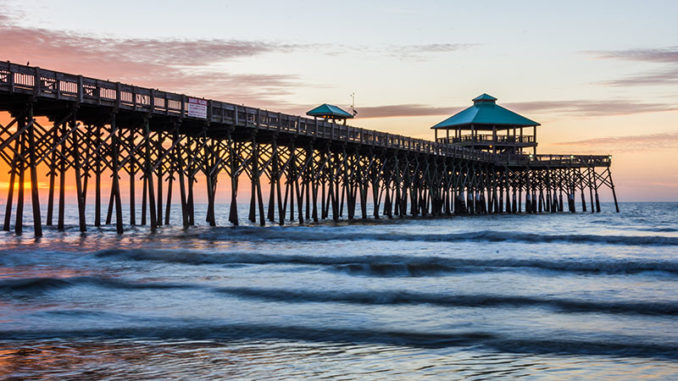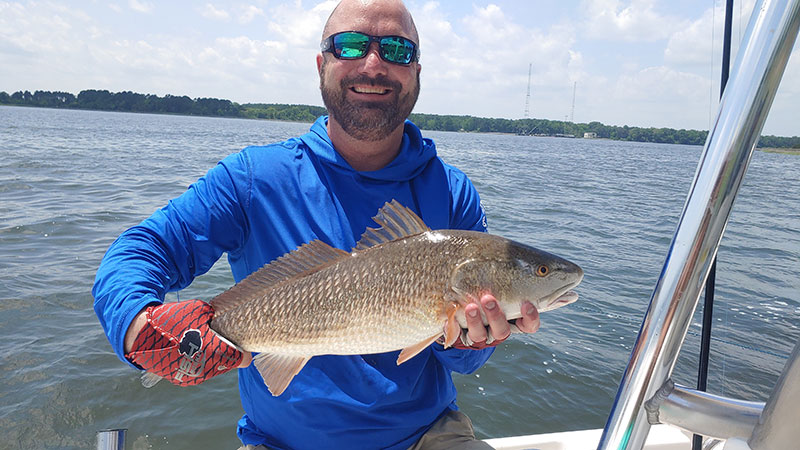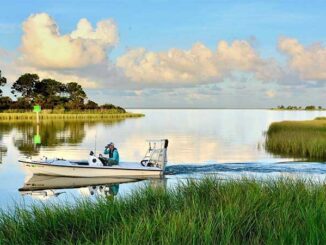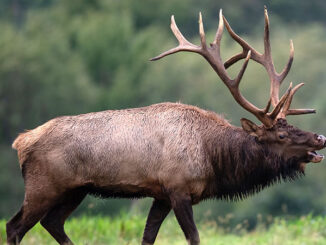
In 1670, English colonists landed on the west bank of the Ashley River, a place they dubbed Charles Towne Landing after King Charles II of England. They gave the land the name of Carolina, which comes from the Latin for Charles.
Those colonists built their town on a peninsula jutting into an excellent natural harbor. More than 350 years later, Charleston Harbor in South Carolina still serves as one of the busiest ports in the world. Although the harbor averages 15 to 25 feet deep, a 55-foot-deep ship channel makes a direct conduit to the Atlantic Ocean. Today the area offers access to great inland and offshore fishing and lots more.
“The harbor bottom is highly variable, but it’s mostly mud with some sandbars,” said Bryan Frazier, a South Carolina Department of Natural Resources biologist. “A few places in the harbor have rock bottoms and soft coral that attract baitfish. Some holes drop to about 70 feet.”
The Ashley River flows down from northwest. The Cooper River flows generally southward out of the Santee-Cooper Lakes until it merges with the Wando River coming down from the northeast. The combined three river mouths form Charleston Harbor.
Another river, the Stono, doesn’t flow directly into Charleston Harbor, but it does connect to it and the expanded estuary through Wappoo Creek. The Intracoastal Waterway runs through the area. Many feeder creeks flow throughout the system. These waterways create a vibrant estuary around the Charleston area.
Numerous marshes
Marshes line most waterways as they course around numerous islands and over oyster reefs. The estuary provides a rich nursery for crabs, menhaden or pogies, shrimp, mullet and other baitfish, giving larger fish abundant food sources.
“We’re right on the Atlantic Ocean, so the salinity stays high in the harbor, but as people go up the rivers, the salinity levels change,” said Scott Beane with Charlestowne Coastal Charters (843-442-6769, Charlestownecoastalfishingcharters.com) who guides in the area. “Up the Cooper River, people can go all the way to Lake Moultrie. In some places, people can catch flounder, redfish and largemouth bass all in the same area on the same baits.”
Strong tides make daily five-to six-foot changes in water levels throughout the system. These tides move bait around the estuary and provoke feeding frenzies from redfish, speckled trout, black drum, bluefish, sheepshead, Spanish mackerel, flounder and other species.
“The fish move as the tide moves,” Beane said. “The rivers flow through significant marshes that provide habitat for fish like redfish and flounder. All three rivers hold good fish. The Ashley is a little more muddy. The other two rivers have clearer water. We catch trout, redfish and flounder all year long. We just catch them in different places at different times.”
Redfish most popular
Charleston area anglers mostly target redfish, speckled trout and flounder. Juvenile redfish stay in the rivers, creeks and marshes until they reach sexual maturity in about four to six years. Then, they move offshore.
“Redfish is the most popular fish to catch around the Charleston area,” Beane said. “In September, it’s still hot, but the fishing is good. Smaller redfish will be up in the creeks around the oyster beds and docks. In the marshes, I like to fish at high tide and look for tailing fish. We sight-cast lures to the tailing redfish. They like to eat fiddler crabs. At low tide, we fish around the oyster reefs or dock pilings.”
In the marshes and creeks, anglers catch redfish and flounder on live shrimp under popping corks or with artificials. Also try tipping a Carolina rig with live shrimp, finger mullets or menhaden and fish at the river channel drop off edges.

Flounder stay in the creeks and marshes from spring through the fall. They start moving offshore around October or November and return in the spring. For flounder, use live shrimp or baitfish. Also, drag plastics over the bottom.
“For flounder, I’ll fish a high tide right on the grass lines,” Beane said. “I’ll use a Carolina rig with a small live mullet. For artificials, I like white soft plastics that imitate mullet or other natural bait. I’ll work it really slow right on the bottom.”
Speckled trout binge
Speckled trout stay in the estuary all year long, but move around. In late summer or early fall, they go on a feeding binge to store up energy for the coming winter.
“Trout should be feeding up really strong in September,” Beane said. “They will be following shrimp and baitfish, like mullet. In September, trout will be up in the creeks and out in the harbor. We throw grubs for them.”
Spanish mackerel come into the harbor from summer through early fall. Anglers might also spot tarpon rolling just offshore. King mackerel and cobia also move closer to shore in late summer. Anglers can also fish offshore reefs for red snapper, grouper, amberjack and triggerfish or troll for dolphin (mahi), tuna, wahoo, sailfish and marlin.
“When the Spanish mackerel come in, we’ll spot them schooling on the surface hitting baitfish,” Beane said. “Watch for diving birds or fish splashing to locate the schools. We follow the schools and throw Got-Cha Plugs or spoons. Run a shiny bait through the school as fast as possible.”
In late summer or fall, bull reds come closer inshore to spawn. Fish for bulls on the channel drop-off edges where the depth plunges to about 20 feet. Use whole finger mullets, mullet chunks or crabs. For big bulls, fish a whole blue crab, but crack the shell to let the juices ooze out. Crab halves also work. Pogies also make great redfish bait. Fish these baits on Carolina rigs. While fishing for redfish, anglers might also catch sharks.
While in the area
For history buffs, few American cities can compare to Charleston. People can stand where Confederate cannons fired upon Fort Sumter to start the Civil War or take a boat trip to the fort. People can also visit other Civil War and Revolutionary War sites in the area, such as Fort Moultrie.
People can also see the C.S.S. Hunley, the first submarine to sink a warship in combat. In 1864, the C.S.S. Hunley attacked and sunk the U.S.S. Housatonic, a Union warship blockading the harbor. The submarine also sank to the bottom of the harbor, but was raised 136 years later.
For more modern warships, tour Patriots Point, home of the U.S.S. Yorktown. The Essex-class aircraft carrier crews fought in World War II, the Korean War and the Vietnam War. Visitors can also see other warships and military hardware.
Take a tour of Boone Hall Plantation & Gardens or other historic homes. Boone Hall, one of the oldest plantations still existing, dates back more than 300 years. In downtown Charleston, tour Rainbow Row, a series of colorful historic houses. Stop in one of the many restaurants to sample the black bean soup or she-crab soup.
For South Carolina licensing and fishing information, visit www.dnr.sc.gov. For area information, go to www.charlestoncvb.com.

